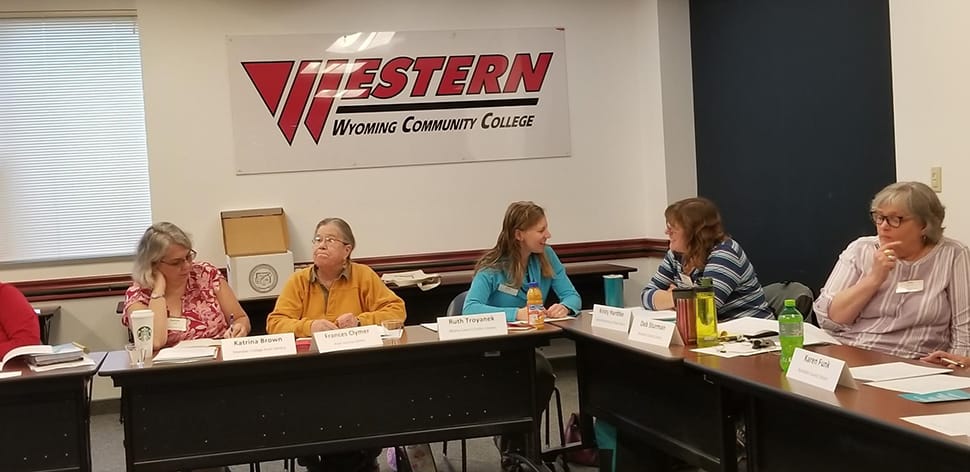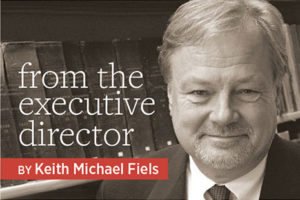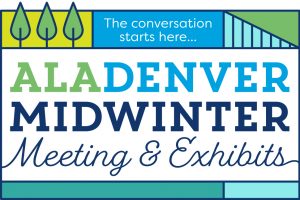
In 1990, when it was ranked one of the worst libraries in Colorado—open only four days per week, the lowest number of books per capita, minimal reference, and no children’s services—Douglas County Libraries (DCL) won 66% of the votes in an election to create a better-funded, independent library district.
By 2007 (and after I had served as DCL director for 16 years), 84% of households in the county had an active library card. Its annual circulation per capita was 27, and gate counts exceeded those of any local business by a wide margin. In June 2009, right after DCL decided to go back to the voters for a tax measure to keep up with community growth, the library earned the number-one spot in Hennen’s American Public Library Rankings for libraries with populations of 250,000–499,000 (based on 2006 government data).
Confident of a win, DCL campaigned to little resistance and many compliments. But the library lost the election by only 1% of the vote.
Shortly thereafter, OCLC unveiled its first From Awareness to Funding study in 2008, exploring the relationship between the public’s perception of a library’s role within the community and success with levies, referenda, and bond measures. It was a revelation, and it underscored the DCL experience: Use does not equal support. Douglas County, like most libraries, had been marketing its services, not its value.
An updated report, From Awareness to Funding: Voter Perceptions and Support of Public Libraries in 2018, again conducted by OCLC in partnership with the Public Library Association and the American Library Association (ALA), found that things have gotten worse. National support for funding declined from 73% in 2008 to 58% in 2018, and library use declined from 79% to 70%. Clearly, public libraries’ approach to advocacy needs to change.
The obvious question is this: How should libraries advocate for support?
Storytelling
The ALA Advocacy Bootcamp (see sidebar), which has been training librarians to become better advocates since 2016, looks to the field of brain science for advice in crafting the library’s message. Such books as Jonathan Haidt’s The Happiness Hypothesis: Finding Modern Truth in Ancient Wisdom (2006) and George Lakoff’s Don’t Think of an Elephant: Know Your Values and Frame the Debate (2004) begin to answer some important questions about human belief systems. How do people come to believe things in the first place? And if they believe something that is wrong, how can library advocates change their minds? The best method is to tell a powerful and meaningful story.
Storytelling is just one strategy in a larger context of advocacy. Advocacy Bootcamp includes much more information on effective advocacy efforts and methods. It presents a model of storytelling, based on the lessons of neuroscience, that is very teachable. A relevant and effective library story can be told in half a minute.
The best library stories have six structural elements:
A real person. Too often, we tell our story in generalities. Libraries serve “children” or “seniors” or “small businesses.” But to connect with an audience, we must be more specific. A real person can be captured in just a few phrases: “Caiden was 3 years old.”
A real problem. The hook of the story is a life problem. “Caiden stuttered.” At this point, notice that we are not talking about an institution. We are talking about one person. This captures people’s emotional attention.
A library intervention. Now we introduce a supporting character—a library staff member, program, or service. “One day Caiden noticed a dog in the library. A little girl was reading to it.” The library points out the path to resolving the real person’s problem. But it’s important to keep the focus on the original character, and not let the library take over the story.
A happy ending. “After reading to that endlessly interested and patient dog for many months, Caiden didn’t stutter anymore.” The library has provided a solution to a real person’s problem.
A single fact. “In our state alone, more than 112 libraries offer a ‘read to dogs’ program.” A brief statistic like this underscores the magnitude of both the problem and the solution.
A tagline. This is a message that provides the frame for a picture that can stick in the mind of an audience. Based on OCLC’s research into what activates support for libraries and bolstered by other studies and investigations, ALA has adopted four key messages:
- Libraries transform lives.
- Libraries transform communities.
- Librarians are passionate advocates for lifelong learning.
- Libraries are a smart investment.
Human nervous systems are wired to get involved in a compelling story. Our minds swing wide open, pushing aside existing preconceptions and prejudices. Even before they decide to join the fight for a cause, people want to know how the story comes out. Relieved by a happy resolution, they bond with a fact that now has an emotional context. People experience a real shift in belief and attitude—once they are armed with a solid example that grounds the story in a plausible reality and a memorable phrase that reframes their outlook.
The importance of repetition
Here’s another thing brain research tells us: Repetition matters. Librarians often routinely relaunch new advocacy narratives, starting over from the beginning every year. But for a message to stick, we must commit to just one without diluting it. A common competing message is “tax burden,” a mantra that has been repeated without variation for more than 50 years. Which approach will win? It’s not enough to tell one good story—the taglines must remain in the script for many years.
More stories
An essential part of ALA’s Advocacy Bootcamp involves writing a story and workshopping it on the spot. Here are four examples developed by participants who used these narratives to bolster their advocacy efforts. Each is based on a real-life situation:
- Jonathan was on the autism spectrum. He didn’t make eye contact with anyone, was withdrawn, and seemed increasingly isolated. He had just started public school, and things were getting worse. His increasingly desperate mother brought him to a library sensory storytime, where he found an environment with low lighting and quiet but engaging ways to participate. Jonathan is blooming. Just this week, he asked if he could be the one to read a story. The library offers two sensory storytimes a week. Libraries transform lives.
- DaQuan was 8 years old. He walked into a library branch one day and told the manager, “This neighborhood sucks!” She laughed. “Why do you say that?” “You didn’t see the side of the library today?” he asked. They walked out to look at the wall. It had been defaced with spray paint—mostly gang graffiti. Then the manager applied for a city grant to do murals. The library hosted a series of planning and practice programs. On the big day, more than 70 families came out to celebrate a colorful new artwork. They brought picnic baskets and video cameras. It was a party. The event is on YouTube now. The new wall is beautiful. A few weeks later, DaQuan saw somebody walking around the building with a spray can. “Hey, man,” he said. “Don’t mess with our wall. We’re proud of that.” The library offered some 60 family programs this year. Libraries transform communities.
- Esther had been a big reader. But in her late 70s she began to suffer macular degeneration. Getting around was a problem. Her family was miles away and busy. She didn’t want to impose. Her life got smaller and smaller. Then one day she got a phone call from Linda, her local librarian. “We’ve got this new product called Playaways,” she said. It’s a way to listen to books. I’m going to check a few of these out for you and bring them over. I know you love books about architecture. I found one I know you’ll love! And I want to know what you think of it.” Now Linda picks up Esther for book discussion groups twice a week. Esther reads all the time and has a much richer social life. Last year, audiobooks made up almost 28% of the library’s business. Librarians are passionate advocates for lifelong learning.
- Marie had just been fired from her high-profile corporate job. Vowing that she would never again work for somebody else, she attended a business startup workshop at the library. For the next three weeks, she worked with staffers to research her competition. She put together a business plan, secured a loan, and hung out her shingle. A year later, she opened an office in a downtown storefront that had been vacant for two years. She also hired two people. Marie works for herself now, helps in revitalizing the downtown area, and creates jobs for others. Some 80% of new start-ups in the county begin at the library. Libraries are a smart investment.
The template for a story is clear. Most of them can be told in less than a minute. Sometimes, however, you’ll hear a story that doesn’t follow the rules. That’s okay. You’ll know when you have a winner. Just remember to keep it focused on real people and make sure it says something positive about the library. If you can, tie it to the core message.
Other considerations
Any library, of any type or size, is the source of hundreds of such stories every year. Isn’t it ironic that we capture everybody else’s stories, but ignore our own? Paying attention to our stories can build a strong internal culture. It might change our community too.
ALA’s Advocacy Bootcamp highlights some other important concerns:
- Librarians aren’t the best spokespersons for their institutions. We need to find the right people and figure out how best to deploy them. Library stories need to be portable, told not in the voice of the librarian, but in a voice that allows recruited speakers to tell them easily. And it doesn’t matter if those speakers are library users. What matters is that they are good speakers. Of course, this recruitment is likely to turn them into passionate library supporters—and potential board members.
- It is not the job of the community to build a great library. It is the job of the library to build a great community. Our focus needs to be on the user, not the library.
- Librarians tend to launch a bewildering variety of advocacy campaigns, most of which disappear before the general public even notices them. Stick to the four messages outlined above.
- New research or initiatives are unnecessary. Put into practice what we already know and repeat those core messages until every single person in America has heard them hundreds of times.
For more tips on applying this and other powerful tools—not just for solving the latest funding crisis but building deep and sustainable support in your community—consider attending or sponsoring an advocacy bootcamp. A bootcamp session will be held 8:30–11:30 a.m., January 25, at the 2019 ALA Midwinter Meeting and Exhibits in Seattle.
Meanwhile, heard any good stories lately?


